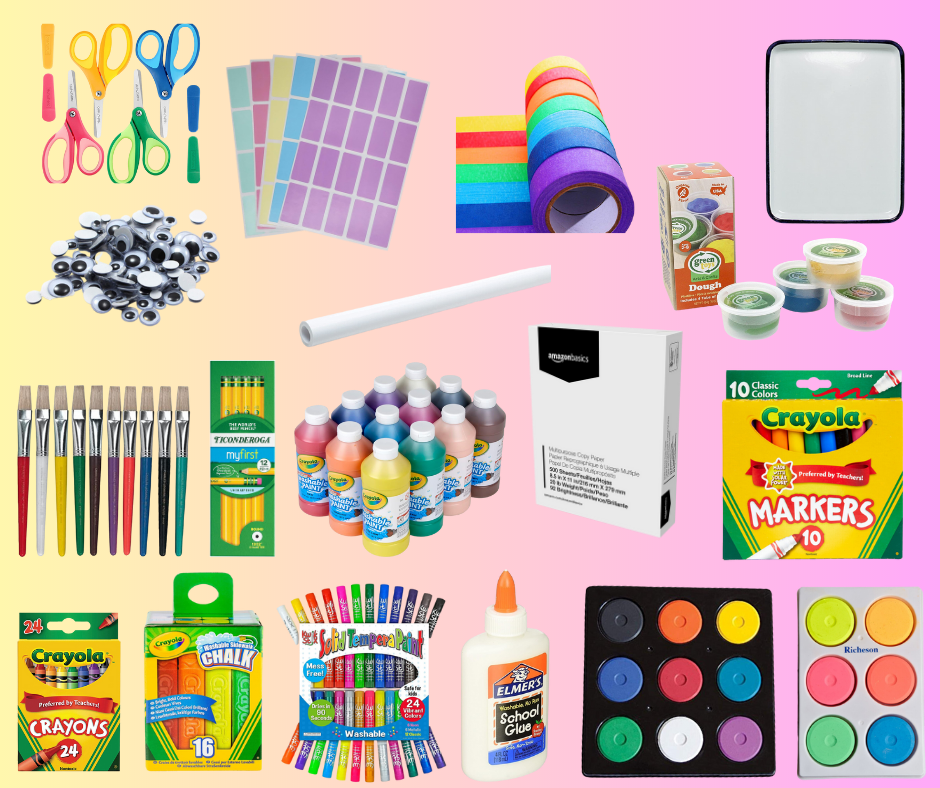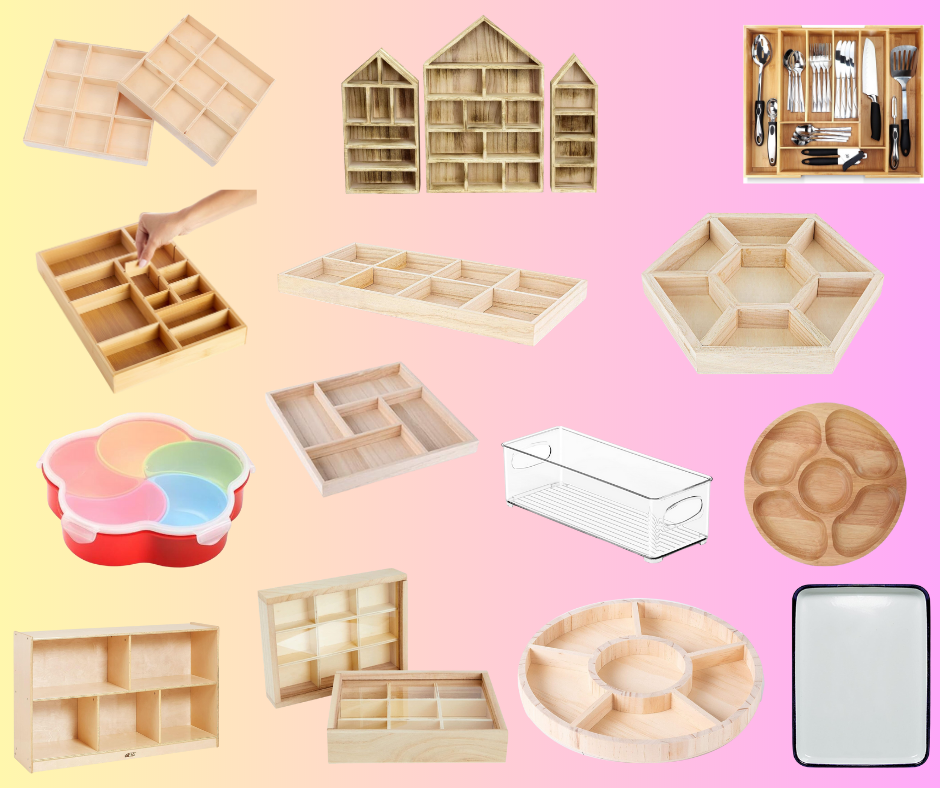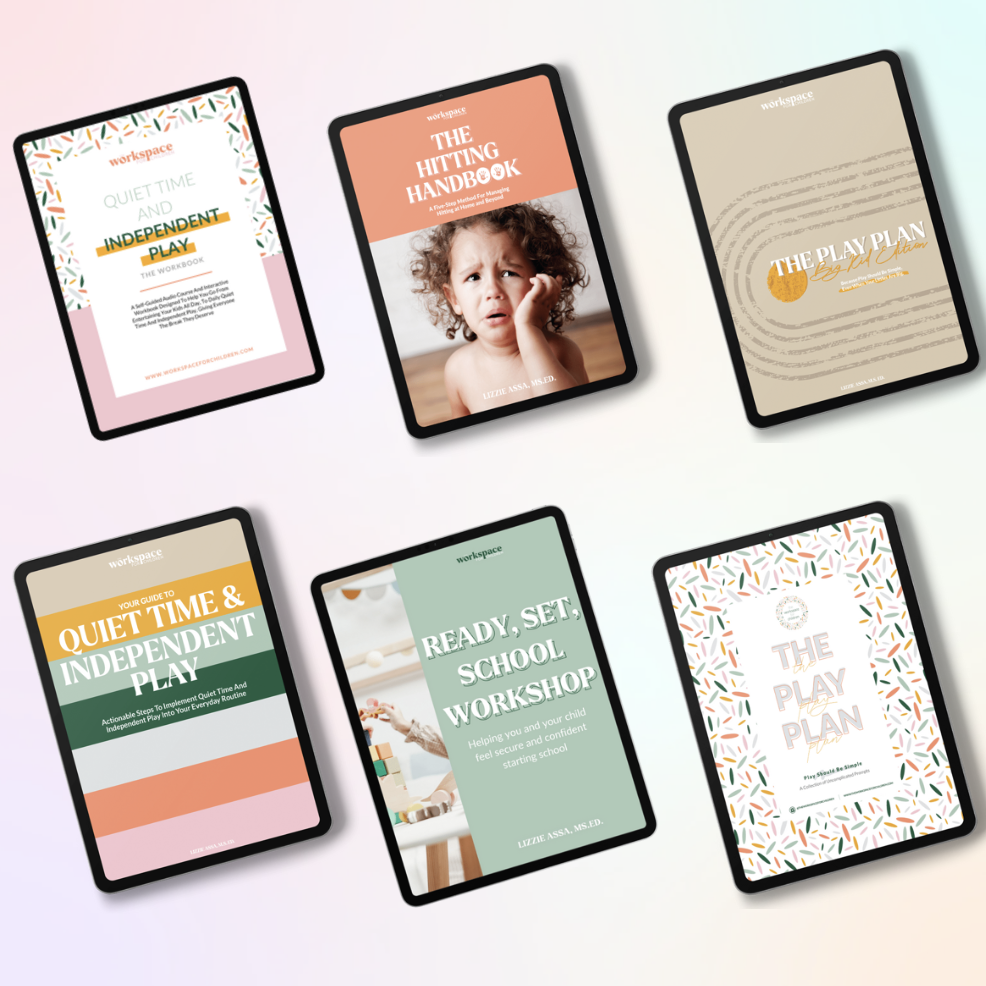Building Independence Through Collage
/Don't let the word "collage" intimidate you - all you need are some scraps, scissors, and glue to start. The results are worth every minute.
Read MoreDon't let the word "collage" intimidate you - all you need are some scraps, scissors, and glue to start. The results are worth every minute.
Read MoreSimple Holiday Playdough Tray and Playdough Recipe
Read MoreYou know that moment when your child proudly shows you his drawing and you have no clue what it is? Click here to learn the best ways of handling that conversation.
Read More
Scissors / Stickers / Masking Tape / Metal Tray / Google Eyes / Roll Paper / Play Dough / Paint Brushes / Pencils / Paint / Paper / Markers / Crayons / Chalk / Kwik Stix / Glue / Mini Paint Cakes / Neon Paint Cakes
I always use a tray when I set out art supplies for kids and it’s not because it looks cute.
Using a sturdy tray for supplies will allow your child to spend less time opening packages, less time searching for that one color they love, and more time creating. The more confident your child feels about creating, the more likely they are to keep going!
Here's why a tray will get your littles creating longer and more often:
Encourages Independence: Divided trays allow children to see all available materials easily. They can make independent choices about what they want to use without needing to ask where things are or fumble through containers.
Fosters Creativity: By having a variety of materials neatly displayed, children are encouraged to experiment and combine different elements. The layout itself can be an invitation to explore and innovate.
Teaches Responsibility and Self-Regulation: Children can learn to take what they need and put it back where it belongs. This helps in developing a sense of responsibility and an understanding of the organization.
Minimizes Overwhelm: Too many options or a cluttered workspace can overwhelm some children. A divided tray keeps everything visible without feeling chaotic. It helps kids focus on the task at hand by presenting options in a clear and accessible way.
Promotes Fine Motor Skills: Picking up small objects from divided compartments helps in developing fine motor skills. This encourages the child to use pincer grasp and other pre-writing skills.
Enhances the Aesthetic Experience: A well-arranged divided tray can be visually appealing, which is in line with the philosophy of creating beautiful and inviting spaces for children to work in. This can heighten their enjoyment and engagement with the art activity.
Facilitates Collaboration: If working in a group, a divided tray can create a sense of community, where children share the materials. It encourages communication, negotiation, and collaborative creativity.
Ease of Clean-Up: Divided trays are typically easy to clean and reset for the next activity. This practical aspect makes them a favorite choice for many educators and caregivers.
Using a divided tray for art supplies aligns with the child-centered approach that emphasizes independence, creativity, and intentional design.
Plus, it’ll get your kids creating independently so that you can get some time back for YOU!
See our favorite trays and storage options below!


Have multiple kids but don’t have the energy to set up separate activities for each of them? Here’s an easy one that all of them will enjoy, and it’s mess-free!!
Read MoreA simple art project for the whole family.
Read MoreMy little one is turning six today, and one of her favorite things is to pretend. She loves to play with her favorite little peg people from Grimm’s Wooden Toys, Grapat, and Teeny Weeny Toys. She also loves to make her own people. We keep blank, unfinished peg dolls in our art cabinet along with lots of loose scraps for creating and new peg people are born into her collection weekly.
Today I am heading into her Kindergarten class to share her love peg people and dollhouse play with her classmates. We are going to read a favorite book of ours, This Is My Dollhouse, by Giselle Potter. I adore this book because it explores the joy and creativity involved in creating your own play materials. It also explores friendships and feelings, which I love.
After the book, the children will have the opportunity to create their own peg doll. I scoured the art supplies that I already had on hand and created the tinker trays you see here. I encourage you to use what you already have, but I have also listed all of the materials that we used at the bottom of this post.
This project was inspired by my wonderful and brilliant friend, Bar Rucci. You can see her post here. Also, Sloane’s birthday party was held at our favorite local art studio, Oh Canary Art, where the children decorated dollhouses. You can read all about that party on my friend Natalie’s blog.
Have you done a project with your child’s class? How did it go? -Lizzie
Rescuing them from discomfort also robs them of resilience.